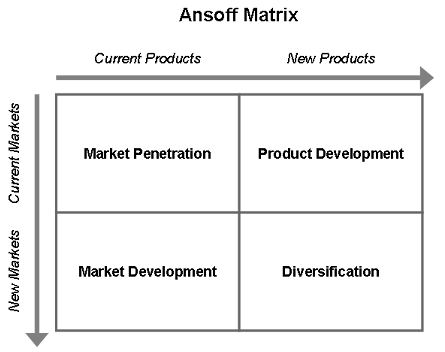 A few years ago I had a meeting with a PhD advisor in the US to talk through the proposed chapter breakdown for my dissertation. When discussing the key components of my final chapter I conveyed that it would include a major section covering policy implications and recommendations for arts organizations, artists, and funders. My advisor smiled a bit and said, “Well, let’s see if you earn that section, first.†It was a good lesson. Whenever I come across a passage in a research study that begins, “The evidence suggests that arts organizations should, could, might …†my antenna goes up and I ask whether the recommendations are merited, or whether liberties have been taken.
A few years ago I had a meeting with a PhD advisor in the US to talk through the proposed chapter breakdown for my dissertation. When discussing the key components of my final chapter I conveyed that it would include a major section covering policy implications and recommendations for arts organizations, artists, and funders. My advisor smiled a bit and said, “Well, let’s see if you earn that section, first.†It was a good lesson. Whenever I come across a passage in a research study that begins, “The evidence suggests that arts organizations should, could, might …†my antenna goes up and I ask whether the recommendations are merited, or whether liberties have been taken.
I share this anecdote because I recently reviewed the findings from a very good study commissioned by the Irvine Foundation—The Cultural Lives of Californians, undertaken by the National Opinion Research Center at the University of Chicago. While the report itself is chock-full of both data and provocative questions that I imagine could be of great value to arts organizations who are sincere about such things as broadening, deepening and diversifying audiences (the motto brought to us by Wallace and Rand back in the day), the Irvine Foundation seems to be overreaching with its follow-on recommendations for arts organizations.
A brief exposition:
A few years ago the Irvine Foundation (located in California) made a dramatic shift in its arts grantmaking strategy. As executive director of the LA County Arts Commission, Laura Zucker, once put it, “Irvine’s constituency seems to have shifted from arts organizations to people in the community not being served by arts organizations.†*
Irvine’s current aim is to promote engagement in the arts for all Californians. Here’s the text that appeared in 2011 when it announced its plans:
Under the new strategy, the foundation will work to boost participation among low-income and ethnically diverse populations that have traditionally been underserved by arts nonprofits; support programs that expand how Californians actively participate in the arts, including the use of digital technology to produce or curate art; and use diverse, non-traditional spaces, especially in regions with few arts-specific venues.
In support of this democratic ideal the Foundation launched in 2013 a new Exploring Engagement Fund to support projects that “aim to engage new and diverse populations by adding active participation opportunities and/or incorporating the use of nontraditional arts spaces†(emphases added). While some nonprofit professional arts organizations in its portfolio met this news with enthusiasm, evidently uptake on the new program was slow. Many of the Foundation’s historic arts grantees seemed unwilling to follow the carrot.
I addressed this resistance a couple years ago in two blog posts (here and also here).  My view, in a nutshell, was (and still is) this: While the Irvine Foundation may have been justified in pursuing a brave new strategy, its grantees were also justified in rebuffing it. I wrote:
Irvine appears to be interested in bringing about a kind of diversity (i.e., change) in the arts sector we don’t often talk about: aesthetic diversity. … However well-researched and justified, Irvine must recognize (and I think it does) that its strategy is out of line with the missions of a majority of professional arts organizations, which were formed to present work by professionals for audiences that come to appreciate that work, not make it. … Irvine needs to recognize that it is endeavoring to coax organizations into uncharted territory. It wants to coerce a change that many cannot make, or do not want to make.
On The Cultural Lives of Californians
So here we are two years later and Irvine has released the findings from its latest study, which investigated differences in  arts and culture participation behaviors across California’s diverse population. It probably goes without saying that many of those surveyed are not patrons of traditional fine arts organizations. Researchers sought to understand (1) what counts as culture, (2) where culture happens, (3) its value to people, and (4) the role of technology in the cultural lives of Californians.
One outcome of the study is an expanded concept of arts participation–one that reflects seven types of behavior researchers encountered: art-making, arts-going, arts-learning, media-based consumption, supporting arts and culture (i.e., volunteering time, money or resources), using social media, and the nebulous category additional activities.  Irvine is not alone in expanding the aperture on arts participation. The NEA has made a similar shift in its periodic survey of public participation in the arts (discussed in this NEA blog post written by director of research Sunil Iyengar).
So, what’s the headline of Irvine’s latest report? Well, it seems to be a good news/bad news message.
First, the report “reframes†the broken-record lament that arts participation is in decline by advancing the much more optimistic perspective that if the definitions of ‘art’ and ‘participation’ are expanded to encompass such things as salsa dancing at the community center, singing at church, knitting at home, watching a YouTube video demonstrating how to knit, writing fan fiction, posting a comment to Facebook about an artist, or taking a photograph and posting it on Instagram–then, actually, significantly more people participate in the arts and culture than previously acknowledged.
(That this might not be encouraging news for orchestras whose audiences for concerts are in decline seems to be a perspective the report doesn’t want to indulge.)
However, the report is not simply a pep rally to drum up enthusiam for the breadth and diversity of cultural participation in California. The bad news? While the levels and varieties of arts and cultural participation overall are “encouraging, there is significant disparity between different groups of Californians.â€
It strikes me that, to a great extent, Irvine is trying to grapple with this disparity and, in particular, trying to harness the energies of nonprofit professional arts organizations to solve this problem. To that end, the report includes several sets of provocative questions—all versions of, “So how might a professional arts organization help improve this situation?â€
- What tools or points of access can organizations offer to support individuals in their own art making and learning?
- What are the opportunities for nonprofit arts organizations to entice and engage those who typically make art in private?
- How can nonprofit arts organizations make their expertise and resources accessible to people who choose to engage culturally in non-arts-specific spaces, including private settings, such as the home?
- What are the opportunities for the nonprofit sector to work in and with community spaces without being disruptive to the activity already underway?
- How can nonprofit arts organizations make their expertise accessible to people who choose to engage culturally online or through mobile devices
I wonder if I am alone in bristling a tiny bit at these questions, which lead a bit too obviously in the direction of Irvine’s grantmaking strategy. Nonetheless, the market is changing, disparities exist, and it’s not unreasonable to at least turn to professional arts groups and ask, “So, what about this market? Do you think you might have something to offer here?â€
While the report merely hints at possible strategies for arts organizations, a blog post by Irvine president Josephine Ramirez introducing the report is more direct.  In What Arts Organizations Should Know About the Cultural Lives of Californians, Ramirez states, “this study, and a growing body of research, point to several important opportunities and implications for arts organizations and the sector.†She mentions five, three of which are:
- Respond to the high demand for more active arts participation;
- Expand offerings to meet people where they are; and
- Explore how the arts can stimulate greater participation and connection among California’s largest and growing demographic groups.
Sound familiar?
Basically, the conclusions drawn from the research are that arts organizations need to develop the sorts of programs and initiatives that Irvine has been trying to spur through its Exploring Engagement Fund.
Overreaching?
And this brings me to my basic concerns about the report. While it is extraordinarily worthwhile for a foundation to shine a light on arts and cultural participation among those disinclined to participate in traditional fine arts institutions, and while smart arts organizations will look at this data and seek to understand what it conveys about arts participation behaviors across diverse populations, I’m not sure that the implications proposed by Ramirez are realistic.
Essentially, Ramirez is suggesting that nonprofit professional arts organizations need to develop new products (e.g., those that meet the demand for active participation and those that happen where people are rather than in the traditional arts space) for new markets (e.g. first generation immigrants and other growing groups who are not currently participating in the arts). This is a move that carries enormous risks.
This Ansoff Matrix demonstrates the point.
If a business is doing well, then (from its perspective) the best strategy is to continue to create the product it knows for the market it knows (market penetration). However, when that market is in decline (and one could argue that this is the case for many professional arts groups at the moment), its least risky move is either (a) to develop new products for existing markets (product development), or (b) to develop new markets for existing products (market development).
Asking arts organizations to develop new products for new markets sends them diagonally into the box marked diversification and is a high-risk move; there can be a significant chance of failure. And while Irvine might be willing to underwrite some of the financial risks associated with experiments in this realm, it can’t underwrite the strategic, operational, compliance, social, and psychological risks associated with such changes—organizations need to be ready, willing, and able to bear these on their own.
Areas for further research?
There seem to be a few assumptions embedded in Ramirez’s recommendations to arts organizations to venture into this realm.
The first is alluded to above. It’s the assumption that profesional museums, theaters, opera companies, dance companies, and orchestras have the capabilities and resources to do this work. This assumption may derive from the difficult reality of an overbuilt nonprofit sector and a desire to see existing assets (whose value may be declining anyway) redeployed in service of a new set of needs. It may derive from the loyalty Irvine feels to its historic grantees and a desire to continue to support them in some way (rather than abandon them for others). Whatever the motivations underpinning the assumption, however, I am not sure it’s sound.
A related concern is that the emphasis on spurring traditional arts organizations into this realm seems to overlook the excellent work being done (for decades now) by grassroots or community-based organizations. They have the necessary skills, values, and ties to diverse populations. Many are already reaching representative audiences (which seems to be Irvine’s primary goal). They are also, quite often, underresourced. Would a better recommendation be that grassroots and community-based organizations merit greater investment to meet this growing need?
The second assumption is the flipside of the first: it’s that first-generation immigrants, the elderly, and the other populations about whose cultural lives Irvine is most concerned desire deeper engagement with opera companies, orchestras, dance companies, museums, and theaters. Is there evidence that this is true?
The third assumption seems to be that art-making is swallowing arts-going whole and that there will be no demand in the future for receptive arts experiences and organizations that are uniquely qualified to offer them. And yet reading the report I was struck by how much interest there still seems to be in good, old-fashioned, “passive” arts-going. Will professional arts organizations that avoid developing active participation strategies be at a disadvantage in the future? Or is there still a healthy market of people who want to buy a ticket, sit in a seat, and watch a show?
Has research already been done that could help address these questions? If so, please comment and send links. If not, would it be worthwhile to probe these assumptions?
***
From my perspective, the report is definitely worth a read. I was particularly interested in a section that reports on the relationship between use of social media (to experience, educate oneself, gather information, or tell others about art or artists) and ethnicity (p. 38). I also spent quite a bit of time examining two infographics that show the relative size of audiences for various forms of music and dance (pp.19-20), one that examines venues for arts-going by type of arts activity (p. 41), one showing rates of arts-going across income levels (p. 24), and one that maps the seven modes of arts participation (p. 12).  Again, it is chock-full of data and I would encourage arts organizations to dig into it.
Here are some links (that Irvine asked me to pass along) to get you started:
- The full report and companion visualization of key data points on Irvine.org
- A brief survey, which will help Irvine understand readership and interest in this data
I would be keen to hear what others have made of Irvine’s new report or its field recommendations.
* Laura Zucker made this comment at a Grantmakers in the Arts panel that I was invited to attend and blog about in 2013. You can read the full post here.


